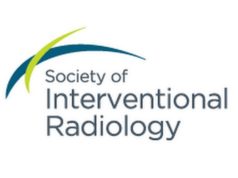
Interventional radiologists must work as a group to make the practice of medicine more patient-centric and efficient, said Alan H Matsumoto, professor and chair of the department of radiology and medical imaging at the University of Virginia, Charlottesville, USA, who delivered the Society of Interventional Radiology’s (SIR) 2019 Dr Charles T Dotter Lecture during SIR’s annual scientific meeting (23–28 March, Austin, USA).
“By providing timely and accurate diagnoses and performing minimally invasive procedures with less morbidity and faster recovery times for patients, interventional radiologists are well positioned to address the triple aim of healthcare: better patient care, improving the health of populations and reducing per capita costs,” said Matsumoto.
“We must have the will and fortitude to employ patience while we adapt and create mutually viable practice models for all members of our specialty. Interventional radiology can go so much further together, as one, in our efforts to grow the specialty and serve our patients,” he said. “We must grow our relationships with patients to transition from being a doctor’s doctor to being a patient’s doctor. Our patients can and will become some of our biggest advocates and allies, as long as we put them at the centre of our care models.”
Matsumoto based his lecture on four facts that he believes are impacting the practice of medicine and IR in the USA. In his words, these are:
- US healthcare is the most expensive in the world, yet ranks last amongst developed countries.
- Consumerism is starting to drive healthcare.
- Information is doubling every 73 days.
- Healthcare is changing so quickly, that being adaptable is now a requisite for health systems and providers.
The US healthcare system is expensive
Elaborating on the expense and inefficiencies of the US healthcare system in his Dotter lecture, Matsumoto quoted an international study from 2014 that looked at 11 different healthcare factors in developed nations, including efficiency, access, quality, and infant mortality, where the USA ranked last. “Despite that”, he said, “comparing the life expectancy amongst these 36 different developed countries, the USA ranks just 31st. Life expectancy in the USA was 78.6 years in 2016. In 2018, it decreased a little more.”
He continued, “Despite the fact that our quality is lagging, and our life expectancy is below other developed countries, the cost of US healthcare is still going up. It is averaging US$12,000 per person, per year. What that translates into is that the cost of healthcare in the USA is more than two times the cost in any other developed country, and translate to about US$3.3 trillion a year, which is about 18% of the US GDP and more than the entire GDP of the United Kingdom.”
“Consumerism is driving healthcare”
Speaking to Interventional News, Matsumoto expanded on the role of consumerism in driving healthcare. “Consumerism has hit the marketplace in healthcare. At the same time, industry has changed how they are approaching healthcare”, he said. “There is a lot of money in healthcare, so when the business sharks smell the blood in the water, they go to it. Retailers, payers, pharmacies, private equity firms and venture capital groups are becoming more involved in the delivery of care. They are forming US$100–200 billion corporations and partnerships and vertically-integrated health system networks to affect and control where patients receive their care. Mega-mergers, acquisitions, partnerships and corporatisation of medicine are more commonplace, such that the era of healthcare disruption is here and is causing many hospitals to close because they can no longer compete.”
Considering the purchasing power and impact of these large, transnational companies, as compared to smaller health systems or to the amount of individual hospitals, Matsumoto asked the audience to “Imagine the influence these companies can have on our healthcare marketplace.”
Showing a graph of changes in healthcare premiums between 1999 and 2015, he demonstrated that healthcare premiums have increased more than 200%, whilst earnings had only increased 56% in the same timeframe. Noting this, he said that “This financial divergence is creating a major problem for patients and employers, so many folks are choosing large deductible plans and higher co-pays, which ultimately transfers the costs down to the patient.”
“In addition, the growth in household spending between 2008 and 2016 grew on average about 1.6%, yet expenditures related to items like apparel, entertainment, housing and transportation have grown less than 1.2%, while the cost of health care and health insurance increased 5.6% and 8.4%, respectively. Healthcare costs have risen so much that patients are not able to make their payments, causing bad debt to rise 500%, increasing from to 1% to 5% over that same eight-year period. Therefore, increasing healthcare costs alone has effectively wiped out any significant income gains for the average family.”
“It has also led many politicians and patients to advocate for a single payer system. Indeed, the CEO of Walgreens was quoted in The New York Times as saying, ‘The patient as a consumer will expect, and have increasingly seamless access to, care when, where, and at the value that they want’. The need for price transparency and more affordable care are really driving consumerism.”
He went on to use the example of the cost for a total knee replacement in various geographies in California. The average cost of this surgery was US$22,000 more, according to Matsumoto, on the Monterey coast than in the San Joaquin Valley. “This variability in cost without demonstrated difference in outcomes has led to the development of online shopping sites; further driving consumerism,” he told the SIR audience.
Summing all these difficulties, Matsumoto stated: “All of these headwinds in the healthcare industry are leading to disaggregation of health care services, failing practices, and hospital closures.”
Information is doubling every 73 days
“In four years, we will be dealing with one million times the information we are dealing with today”, Matsumoto informed delegates. “An inflection point in business occurred around 2005,” he went on to say. “Empowered by an exponential growth in computational capabilities, industry seized the opportunity to use this information to usher in the digital age of business and social media. Over the next few years, Google introduced Android and acquired YouTube. Twitter was launched. Virtual Machine (VM) software soon appeared—which made it possible to run multiple systems and applications simultaneously, which eventually enabled cloud computing. The development of IBM Watson, a cognitive computer which used machine learning and artificial intelligence algorithms, was also initiated. The ultimate disruptor, the Apple iPhone, was also introduced. Technology was changing the world, and with it, health care.“
“The rapid pace of data generation and information sharing has made it difficult for systems and people to manage and adapt to this accelerating pace of change.” Matsumoto said.
Being adaptable is a prerequisite of working in the US healthcare system: The opportunity for IR
When asked how interventional radiologists can adapt to this changing environment, Matsumoto explained to this newspaper: “Because of the nature of our specialty, IR is well-positioned to help in managing this healthcare conversation.” He cited a paper authored by Donald Berwick, a former administrator of the Centers for Medicare and Medicaid Services, and colleagues, in which they outlined the “triple aim of healthcare”. These were, in Matsumoto’s words, “Better health for patients, with improved quality, access, and outcomes; enhanced population health; and reducing the costs of healthcare, or at least bending the cost-curve for health care.”
However, the rate of change is accelerating, making it feel as if we are in the middle of a disruptive health care tornado, resulting in fragmentation and disaggregation of patient care, while at the same time creating a sense of urgency to fix things. In addition, most organisations and people adapt to change on a linear scale, making it difficult for them to adapt to the exponential rate of change that is occurring, which is further aggravating the health care equation. In this environment, interventional radiologists are very well-positioned to help address the triple aim of health care because of the innovative and creative nature in which interventional radiologists address patient care dilemmas by using minimally-invasive procedures. It is in this current environment that the specialty of IR and its tendency to attract providers with a high adaptability quotient also come into play. Interventional radiologists are better suited than most providers to adjust to the accelerating rate of change in medicine. Therefore, my message is: patients and patience—by keeping patients as our ‘true north’ and remembering that patients are our reason for being, while we exercise patience in making decisions and developing solutions going forward. It is also the perfect time for interventional radiologists to evolve from being a doctor’s doctor to being the patient’s doctor.”
Emphasising his take-home message, Matsumoto said: “The biggest message I have is that unity and purpose are essential, not only for our patients, but also for our specialty. With the fragmentation that is occurring in healthcare, if the specialty of IR is not unified and segments of IR go off separately, our collective voice will become a whisper, such that the policy makers, legislators, payers, health systems, and most importantly patients, will not hear us. They will not recognise the value and special skills we bring to the equation during this disrupted and fragmented period in health care.”
Ending on a positive note, he said to Interventional News: “I wanted to convey that we are much stronger together than apart, and the sum of the whole is greater than the individual parts.” He ended his Dotter lecture with a take home message quoting an old African proverb: “If you want to go quickly, go alone; if you want to go far, go together.”
The Dotter Lecture, supported by SIR Foundation, is an annual event named in honour of Charles T Dotter, considered universally to be the founding father of interventional radiology. SIR says that the annual lecture spotlights an outstanding interventional radiologist who has greatly contributed to the field and to the society.
“Dr Matsumoto’s commitment to patient-centred care is representative of what the future of interventional radiology will be,” commented SIR president M Victoria Marx, an interventional radiologist at Keck Medicine of USC, and professor of clinical radiology and diagnostic radiology residency program director at Keck School of Medicine of USC, Los Angeles, USA. “His call for unity and a shared purpose among interventional radiologists is a model for us to follow to make a change in the wider health care community.”
A University of Virginia faculty member since 1991, Matsumoto has helped train more than 200 diagnostic radiology residents and 100 vascular and interventional radiology fellows. His patient-centred and collaborative working style has led to the multidisciplinary care of many patients. Matsumoto is a past-president of SIR and former programme chair of the annual scientific meeting; he has been involved with SIR for 31 years.











